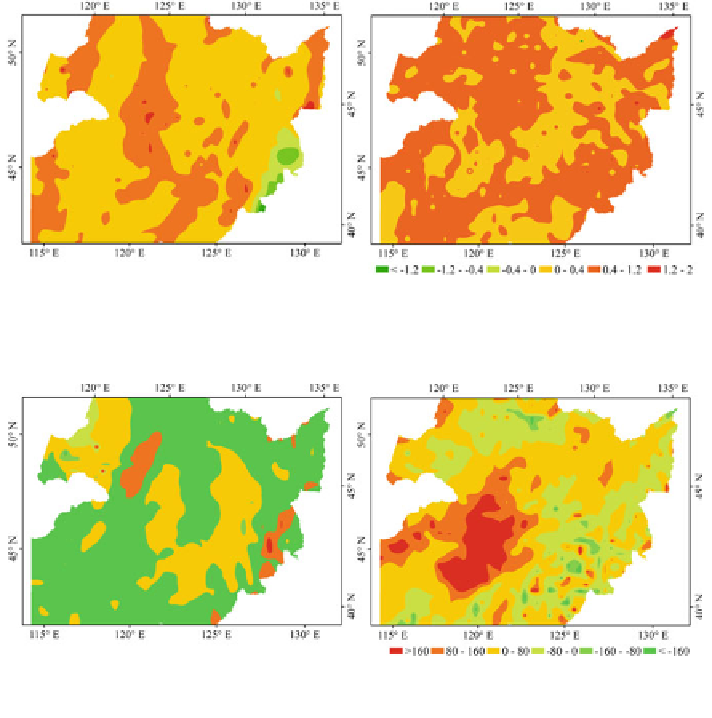Geography Reference
In-Depth Information
Fig. 4.3 Temperature change in Northeast China in DJF (December, January and February)
(left) and JJA (June, July and August) (right) during 2030-2040
Fig. 4.4 Change of precipitation in Northeast China in DJF (left) and JJA (right) caused by land
use/cover change during 2030-2040
The previous researches have indicated that the climate change will have sig-
nificant impacts on the crop yields, and there is significant regional difference of
these impacts (Deng et al.
2010c
; Sun et al.
2006b
). When the temperature
increases by 1 C, the per unit area yields of the wheat and soybean may increase
by 2-40 %, and the decrement is higher in the northeast part than it is in the
southwest part of Northeast China. When the precipitation increases by 10 %, the
grain yield will increase by approximately 10 % in the western and southwest part,
while it is the contrary in the southeast part (Ma
1996
). However, the temperature
rise may aggravate the decrease of precipitation, since they generally appear
simultaneously. In addition, the previous research indicate that when the tem-
perature increases by 2 C and the precipitation decreases by 20 %, the grain yield
in the western part of Northeast China will decrease by 10-18 % (Ma
2008
).
Therefore, the future grain yield in Northeast China will show a decreasing trend
on the whole, and the grain yield and soybean yield may decrease by at least 10 %
in the future.

